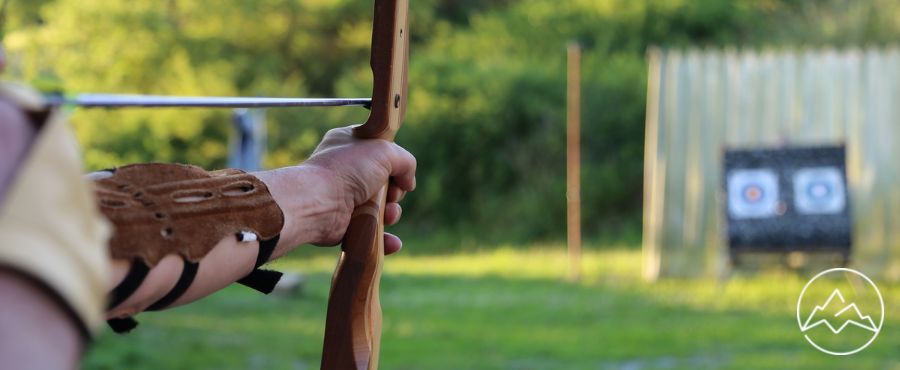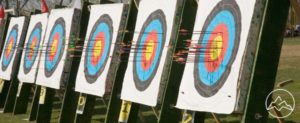Archery scoring formats can be complex and varied, posing a challenge for archers who seek to understand and navigate the intricacies of different target accuracy systems. For instance, the National Field Archery Association (NFAA) employs white center circles surrounded by blue rings for indoor targets, incorporating an X ring in the center for tie-breakers. On the other hand, USA Archery utilizes a multicolored target with varying ring values depending on the type of bow used. Additionally, IBO 3D competitions take place in wooded areas with unmarked distances, using 3-dimensional animal targets with unique scoring rings. FITA competitions and other events like the Vegas Shoot and Lancaster Archery Classic further add to the diversity of scoring systems. Understanding these formats and their corresponding intricacies is crucial for archers looking to track their progress and improve their skills. In this article, we will delve into the details of these archery scoring formats, providing a comprehensive guide for target accuracy.
Key Takeaways
- Archery scoring formats can vary greatly depending on the organization and type of competition.
- Different organizations, such as NFAA, USA Archery, and IBO, have their own unique scoring systems.
- Scoring rings determine the accuracy of the shot and the resulting score in most archery competitions.
- Accuracy is crucial in archery scoring, and different formats provide archers with various challenges and opportunities to excel.
Archery Scoring Formats
The various archery scoring formats, such as NFAA, USA Archery, IBO 3D competitions, FITA, Vegas Shoot, and Lancaster Archery Classic, each have their own unique target designs and scoring systems. Understanding scoring rings is crucial in archery, as it determines the accuracy of the shot and the resulting score. For example, in NFAA indoor targets, there are white center circles surrounded by blue rings, with an X ring in the center for breaking ties. On the other hand, USA Archery uses a multicolored target with a gold center and red, black, blue, and white outer rings. The scoring technique for different target types also varies. In FITA competitions, archers shoot 144 arrows at four different distances, while IBO 3D competitions take place in the woods at unmarked distances, using 3-dimensional animal targets. Familiarizing oneself with the scoring systems of different formats is essential for successful participation in archery.
NFAA Scoring
NFAA scoring involves the use of white center circles surrounded by blue rings for indoor targets. This format offers a clear visual representation for archers to aim at. To understand NFAA scoring techniques, it is important to consider the following key points:
- X ring: The X ring is located in the center of the target and is used for breaking ties. Hitting this ring indicates a closer shot to the center.
- Single or five spot targets: Archers have the option to choose between single or five spot targets. Single spot targets have a single scoring area, while five spot targets have five separate target faces.
- Importance of accuracy: In NFAA scoring, accuracy plays a crucial role in determining the final score. Hitting the center of the target and aiming for the X ring can significantly impact an archer’s overall score.
- Competitive environment: NFAA scoring is commonly used in competitive archery. The use of distinct scoring rings and the X ring adds an element of precision and challenge for archers aiming for the highest score possible.
Understanding NFAA scoring techniques and prioritizing accuracy are essential for archers looking to improve their target accuracy and succeed in competitive archery.
Other Scoring Systems
Different archery organizations have developed their own unique scoring systems to add complexity and variety to the sport, allowing archers to showcase their skills in different formats and settings. In addition to the NFAA and USA Archery scoring formats, there are other scoring systems used in specific archery competitions. For indoor archery, the NFAA format includes white center circles surrounded by blue rings, with an X ring in the center for breaking ties. Another popular format is the multicolored target used by USA Archery, which features a gold center and red, black, blue, and white outer rings. Outdoor field archery competitions, on the other hand, have formats like Field, Hunter, and Animal rounds. In 3D competitions, such as those organized by the IBO, unmarked distances are used, and 3-dimensional animal targets are scored based on rings worth 11, 10, 8, and 5 points. These variations in scoring systems provide archers with different challenges and opportunities to excel in their chosen format.
Frequently Asked Questions
How are scores calculated in IBO 3D competitions?
Scoring in IBO 3D competitions is calculated based on the rings hit by the archer’s arrows. The 3-dimensional animal targets used in these competitions have scoring rings worth 11, 10, 8, and 5 points. When an arrow hits the target, the points awarded depend on which scoring ring it lands in. The archer’s total score is determined by summing up the points earned for each arrow shot throughout the competition.
What is the significance of the X ring in archery scoring?
The X ring in archery scoring holds significant importance as it directly affects the overall score accuracy. Symbolically, it represents precision and mastery of the sport. The X ring is the centermost and smallest ring on the target, and hitting it indicates the closest shot to the center. In competitive environments, scoring an X instead of a lower ring can make a crucial difference. This emphasizes the need for archers to aim for maximum accuracy and consistency in their shots.
How does the scoring system in FITA competitions differ from other formats?
The FITA scoring system in archery competitions differs from other formats in several ways. FITA, which stands for Fédération Internationale de Tir à l’Arc, involves shooting 144 arrows at four different distances. The target used in FITA competitions has a multicolored design with a gold center and red, black, blue, and white outer rings. The 10-ring in FITA scoring depends on the bow type, and the scoring system is unique to FITA. This scoring system distinguishes FITA from other archery formats, such as NFAA, USA Archery, IBO 3D competitions, Vegas Shoot, and Lancaster Archery Classic.
What is the scoring system used in the Vegas Shoot?
The scoring system used in the Vegas Shoot involves a target design that is similar to the one used in USA Archery. The target consists of multicolored rings, with a gold center and red, black, blue, and white outer rings. The smallest ring is a big 10 ring, and a smaller ring scored as an X. This scoring system differs from other formats in that it places emphasis on accuracy and precision, with the X ring indicating a closer shot to the center.
Does the Lancaster Archery Classic have its own unique target design?
Yes, the Lancaster Archery Classic does have its own unique target design. The target used in the Lancaster Archery Classic is the same as the one used in USA Archery, with a gold center and red, black, blue, and white outer rings. However, the Lancaster Archery Classic has its own scoring system. The target has a smaller ring scored as an X, and the smallest ring is a big 10 ring. This scoring system allows for more precise scoring and differentiation in competitive environments. In contrast, the IBO 3D competitions use 3-dimensional animal targets with scoring rings worth 11, 10, 8, and 5 points.
Conclusion
In conclusion, understanding the various archery scoring formats is crucial for any archer aiming for target accuracy. Whether it be the NFAA’s white center circles or the multicolored targets used by USA Archery, each format has its own unique rules and scoring systems. Tracking scores and joining archery communities can greatly benefit an archer’s progression. The X ring, symbolizing a closer shot to the center, holds great significance in competitive environments. So, embrace the challenge, aim for perfection, and let your arrows hit the mark with precision and grace.












